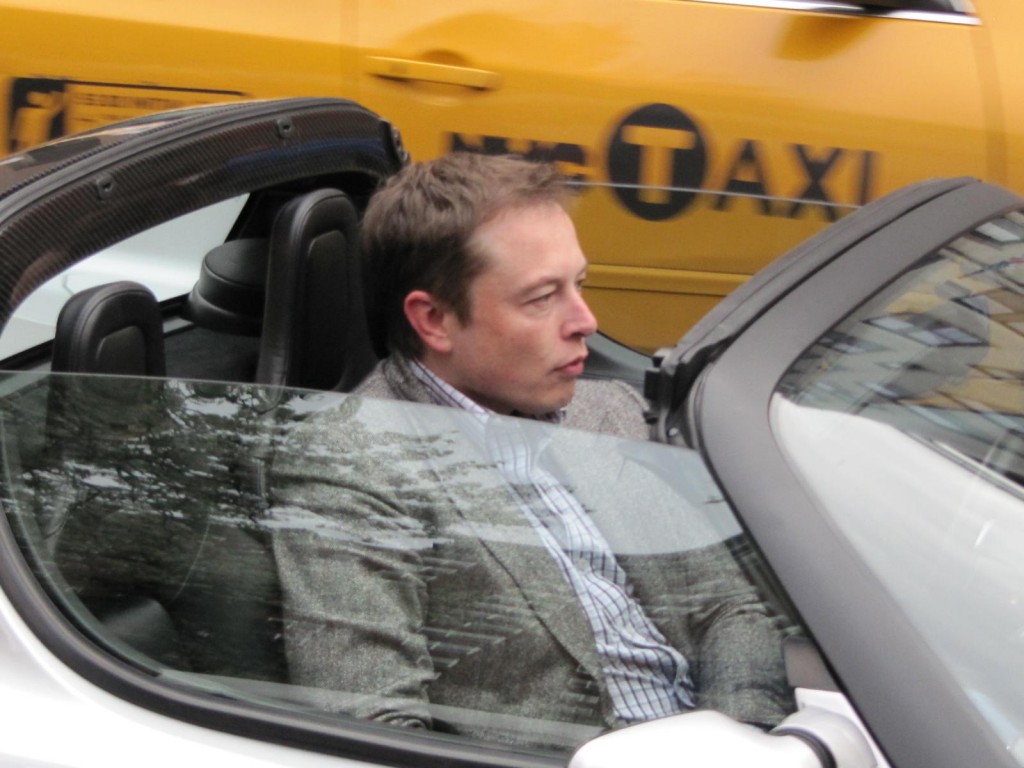Why didn't the Tesla Model X sell as well as Elon Musk suggested it could?
What happens when a Hyundai Ioniq Electric battery uses up the last of its energy capacity?
This is our look back at the Week In Reverse—right here at Green Car Reports—for the week ending on Friday, June 2, 2017.
Friday, we asked where the latest Popemobile had been manufactured? Would you believe the all-electric papal transport comes from Michigan (even though its Opel badge is European)?
Donald Trump pulled the U.S. out of the global Paris climate treaty the previous day—joining only Syria and Nicaragua among nations—so Tesla CEO Elon Musk pulled out of Trump's business councils and tweeted about it. Disney CEO Robert Iger joined him.

'Revenge of the Electric Car' premiere: Elon Musk arrives in a Tesla Roadster
On Thursday, we answered an electric-car query: what happens if a Hyundai Ioniq Electric runs completely out of battery charge? An intrepid owner showed the various steps on video.
A couple of years ago, everyone from Musk to financial analysts thought the Tesla Model X electric SUV would outsell the older Model S. But that didn't happen, and we explored some of the theories as to why not.
Wednesday, the day before Trump's Paris pact decision, we noted that fuel-economy rules have been tarred as job killers. That's simply not true, and a new analysis quantifies the many jobs associated with the technologies that boost efficiency.
While several studies have shown over the years that electric cars are cleaner than hybrids in most places in the U.S. (and for the vast majority of buyers), there's yet another chart that shows principle graphically.
On Tuesday, we noted that in addition to slashing tailpipe emissions and adding 30 electric cars by 2025, Volkswagen says it plans to cut the environmental impact of all vehicle manufacturing by 45 percent. This comes after it said it met earlier reduction goals ahead of schedule.

Volkswagen Golf uses 27.5 percent less water
A bill quietly introduced into Congress in the week before Monday's Memorial Day holiday would loosen CAFE rules by letting automakers use various credits more generously.
(We note that more than a week later, the text of the bill still hasn't been posted on the Congressional website—meaning analysts and advocates on other sides can't actually assess its impact.)
Monday was the U.S. Memorial Day holiday; in the spirit of energy independence, we noted that Tesla's solar roof tiles are now available for order. The company says it will make the first deliveries in California this month.
Over the weekend, we noted that VentureBeat tested a chatbot that answers questions about the Kia Niro hybrid wagon—and described how it did on some tough queries.
Among other stories: while the Volkswagen diesel scandal will leave many legacies, one of the more interesting ones is that the deception may finally have caused the EU to get serious about enforcing test rules in each of its member states.
Perhaps our most optimistic story this week covered a Chinese-backed program in Wyoming that aids coal miners who become wind-farm technicians, pointing out (once more) that clean energy produces lots of jobs.
![Wind farm outside Fort MacLeod, Alberta, Canada [photographer: Joel Bennett] Wind farm outside Fort MacLeod, Alberta, Canada [photographer: Joel Bennett]](https://images.hgmsites.net/lrg/wind-farm-outside-fort-macleod-alberta-canada-photographer-joel-bennett_100608718_l.jpg)
Wind farm outside Fort MacLeod, Alberta, Canada [photographer: Joel Bennett]
Finally, this week's fun factoid: the entire U.S. coal industry—the one President Trump keeps saying he's going to bring back—employs fewer people in total than do U.S. museums. And fewer people than the fast-food chain Arby's.
Those were our main stories this week; we'll see you again next week. Until then, this has been the Green Car Reports Week in Reverse update.
________________________________________________













